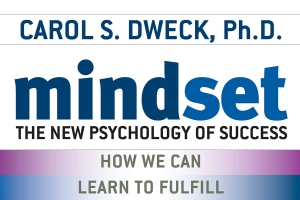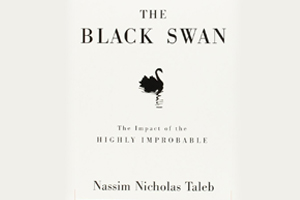This handcrafted book summary will help you learn
- Why amateur investors like you have a higher chance of success compared to professional investors?
- Why stocks should be picked basis the story of the company?
- How to discover the personality of a company, whose stock you want to buy?
- How to build a portfolio using the story behind opportunity companies?
Old is gold
I believe that investing is about believing in fundamentals that are as old as time itself. It is not about buying stocks; it is about buying a stake in a successful company via the shares route. It is also about patience- in my portfolio, the big winners take about 3-10 years to prove that they are the big winners.
The amateur is the winner
Do you see stocks as a complex instrument that needs expert views for you to decide which stocks to buy? You are wrong. The first rule in my investment philosophy is to stop listening to experts. The amateur investor is always better placed to win in the stock market if she sticks to the underlying fundamentals.
If you see Dunkin' Donuts open a couple of new restaurants in your area, it means that Dunkin' Donuts is growing. You do not need a high flying investment analyst to tell you that Dunkin' Donuts is doing well. This is common knowledge. The power of common knowledge is the only thing that the amateur investor needs to pick the right companies, and therefore, the right stocks.
Stock picking is an art
When I lost my father at the age of ten, I decided to support my mother by working part-time. As an 11 years old caddy, my education in stocks happened on the golf course. I continued being a caddy all through high school and college and absorbed all the discussions that happened on the golf course, while the movers and shakers played golf. In college, I decided to focus on arts and picked subjects like psychology, logic, epistemology and history.
I firmly believe that picking stocks is an art, and the only math you need to succeed in stock markets is primary school math. In 1963, I bought my first share (Flying Tiger Airlines) while still in college. I had done my research on Flying Tiger Airline before buying its shares, and within two years, I made a five-fold return on it, which partially funded my education at Wharton. At the Graduate School in Wharton, I got to do an internship with Fidelity and then joined the army, which took me to Korea. After my army stint, I joined Fidelity as a research analyst.
Before you begin buying stocks
When any of us first starts thinking of investing in stocks, we get the usual warning from friends and well-wishers- 'Stocks are risky. Stay with bonds (or debt)'. Yes, stocks are riskier, but stocks are about growth, while bonds are about the lending interest rate. That's a big difference. When picked with proper research, your stocks portfolio will, amidst all the uncertainties, reward you for backing growth.
But before you start buying stocks, think through these three questions:
Q1: Do I own a house?
It is vital that you buy a house before you buy stocks. Buying a house helps you understand the research that you need to buy stocks. When you buy a house, you do not go by speculation or news reports. Before buying the house, you visit the house, check every nook, and check plumbing and the schools in the neighbourhood, among many more checks. This is the common knowledge research that you need to do for picking stocks. Why should your checklist while buying a house become irrelevant when you buy stocks?
Q2: Do I need the money?
The risk in stocks gets magnified depending on what you need money for, in terms of life goals. If most of your savings will be spent on your child's college in the next 2-3 years, then stocks are not the right option for you. The mantra is to invest a portion of your money that does not hurt you, in terms of meeting your life goals.
Q3: Do I have the quality that will make me successful in stocks?
You need to have a couple of qualities to succeed as a stock picker, including patience, tolerance for uncertainty, and willingness to do research. Being emotional and trusting your 'gut instincts' is not what helps in the stock market. The willingness to stay invested in your stocks, despite negative market emotion (as long as the stock fundamentals are in place) defines your success in the stock market.
Do you have the edge?
As an amateur investor looking for the right company to buy shares in, you will get an opportunity in your own area, at least 2-3 times a year. It is essential for you to look for opportunities in the space that you understand well, and are comfortable in.
Doctors, who are looking for investment opportunities, should be interested in medical and pharma companies. That's because doctors prescribe medicines all through their day. But my instinct tells me that if there were a survey among doctors who are also investors, you would discover that doctors are more invested in oil stocks than medical stocks.
What is your edge? What space do you understand well? Pick stocks when you have the edge. This edge can be a professional advantage like the doctor example, or it can be a consumer's edge, where you are able to spot an opportunity just because you were observant enough while doing your weekly shopping or dining at a neighbourhood retail store or restaurant. The Dunkin' Donut example we discussed earlier is an example of consumer's edge.
What's the story behind your opportunity company?
Once you have identified the opportunity stock with your professional or consumer's edge, it is time to do some research. Here are a few questions to begin your research:
- Did you identify the opportunity company because one product of that company is doing well? In that case, dive deep to figure out what impact the success of that product will have on the overall company results?
- How big is the opportunity company? In general, you will have higher returns when you invest in smaller opportunity companies. Large companies like Coca-Cola in your portfolio bring comfort and stability, but their growth will also not be a multiplier in a short time span.
- What category does the opportunity company fall in? I find these six categories useful for evaluating opportunity companies:
- The slow growers: These are companies that have matured and offer no sharp growth peaks, but do offer a generous and regular dividend. In my portfolio, there's very little space for these slow growers. They typically show 4-6 percent annual growth
- The stalwarts: Stalwarts are big companies that are growing faster than the slow growers. They typically show 10-12 percent annual growth in earnings. I have stalwarts in my portfolio because they stay stable during recessions.
- The fast growers: These are aggressive new companies that grow at 20-25 percent annually. While these opportunity companies may be in fast growth category, there are examples of fast growers like Anheuser-Busch in a slow growth category like beer.
- The cyclicals: In these companies, sales and profits rise and fall in regular time intervals. There may not always be predictability, but there is an 'up and down' pattern. These are the most misunderstood opportunity companies and typically confused with 'stalwarts'. The timing of your entry is critical for you to make money here.
- The turnarounds: These are companies that have gone the wrong way, so much so that their stock is entirely discounted. And then a turnaround happens. There are examples where investors have made 32 times returns by picking up stocks of a battered company, which then turned around.
- The asset plays: These are opportunity companies that have a valuable asset, which most investors have overlooked. This valuable asset could be the real estate of a company that is not doing very well. The land value of its real estate might turn out to be more valuable than the company's business operations.
Your opportunity company has a personality
Is there a perfect opportunity company? The answer may not be a definite yes, but there are these characteristics that define a perfect company:
- The company operates in a non-glamorous and dull business, or has a 'dull name'. Being in a dull business keeps the crowd away, till the 'surprisingly good' results are delivered. By which time you would have made your money and sold your shares to 'trend followers'.
- The company deals with something that is conventionally considered 'disagreeable'. The 'disagreeable' business can be about cleaning, washing, dealing with waste or something depressing like funeral homes.
- The company is a spin-off of a larger and very successful organisation. Such spin-offs come with strong balance sheets, thanks to their parent companies, and the parent company wants to ensure that the spin-off company succeeds.
- Typically analysts do not follow this company, and it is below the radar for most professional investors and experts.
- The company is operating and growing, in a no-growth industry. It gets even better if this company is operating in a niche space.
- The company makes products that people need to keep buying regularly. A toy company sells a blockbuster toy only once during the festive season, but a razor company sells razor blades every day.
- The company's management is buying stocks, or even better, the company is buying back shares. When insiders buy, it shows high confidence in the company's short-term results. Additionally, when the management owns stock, then rewarding shareholders by delivering results becomes a more significant priority, rather than increasing top leadership team's salaries. Buying back shares increase the earnings per share as the number of shares in circulation goes down.
Stay away from 'hot picks'
I believe that the stocks I need to avoid buying are the ones that the rest of the investor community is chasing- the so-called 'hot stocks'. These 'hot stocks' have a very high probability of going the 'sizzle to fizzle' route. Yet another category of stocks that I avoid buying is 'the next----' company. There are companies who have seen their stocks rally up because they were the 'next McDonalds' or the 'next IBM'.
I shun companies that are diversifying, or as I call it, 'diworsefying'. In their attempt to grow, these companies acquire other expensive companies, and then invariably, sell or 'restructure' by selling these acquisitions at a loss. Additionally, companies that rely heavily on one single customer are probably not recommended for your portfolio.
Look under the engine
Having decided which company stocks you want to pick, the next step is to look at the fundamentals of the stock. There are three metrics that you need to look through in detail:
- The earnings line: For all stocks, the charts show a stock price line and an earnings line. Typically, the two lines will move in close proximity. Even if the stock price line moves away from the earnings line, it eventually comes back to move in tandem.
- The P/E ratio: The P/E ratio or the price/earnings ratio is another way to quickly gauge the relationship between stock price and earnings of the company. The P/E ratio helps you understand whether the stock is overpriced, undervalued or reasonably priced, in context of the company's ability to make money.
- Future earnings: I suggest you do not try to predict the future earnings of the company. There are too many assumptions that professional investors build into their 'future earnings analysis' and despite their rigorous number crunching, these experts are 'surprised' when the company declares actual results.
Instead of trying to predict future earnings, you should focus on finding out how the company plans to grow its earnings. A company grows its earnings by reducing costs, raising prices, entering new markets, selling more in existing markets or by closing down loss-making business. You should find out which routes your opportunity company is planning on taking for growing its earnings.
The two minute explainer
Finally, after following all the above steps, there's one more thing you should do before you buy the opportunity company stock. Prepare a two-minute response to the following questions:
- Why am I interested in this company?
- In order to succeed, what does the company need to get done?
- What are the obstacles in the path of getting things done for this company?
Answering these questions will help you have clarity about why you are buying what you are buying. Equally important, the answers to the above questions will be different for stalwarts, fast growers, turnarounds and so on.
Building the right portfolio
Your stock portfolio should always outperform your savings account return. But by what margin? The long-term return on stock markets is about 9-10%, which is higher than 4-6% return on bonds or lower in case of savings accounts. But when you make the effort of researching your stock and spending time on picking the perfect opportunity company, you should be able to generate a 12-15 % return on your stocks portfolio. The question, then is, how do you design a portfolio that generates a 12-15% annual return? And, how many stocks should feature in your portfolio?
The answer to the second question is more straightforward. You should hold as many stocks in your portfolio as you have the 'edge'; or you have unearthed a new stock that meets all the research tips we discussed earlier, including the two-minute response.
To answer the first question, How do you design a portfolio that generates 12-15% returns, you need to go back to the six categories of opportunity companies that we discussed earlier. You will need to build the portfolio keeping mind the stability benefits of stalwarts and slow growers, and the high growth benefits of the fast growers and turnarounds.
When do you sell?
Should you sell your winners when they are up, and hold on to your losers? Or should you sell your losers, and hold on to your winners for further gains. Both these selling strategies are flawed because the assumption is that the current stock price is linked to the fundamental value of the company. The reality is that the current stock price may not always reflect the actual value of the company.
A better selling strategy is to go back to our six types of companies. Build your selling approach basis the type of company- if the stock is a stalwart and it has gone to a certain outlier level, then it is time to sell. In case of fast grower, as long as the growth is fast paced, stay invested. In the case of cyclicals, sell if the current price is high and your research shows that company fundamentals are not in good shape.
At some stage in the near future, markets will decline. These declines are the time to go fishing for opportunities in the stock market. Patience and fundamentals research are big virtues in the stock market. Listening to gossip and expert views, coupled with esoteric analyses, will not help you.
This book by master investor Peter Lynch was first published in 1989, and then revised in 2000. While some of the examples in this book are dated now, the principles of investing detailed by Peter Lynch hold true as much today, as they did 30 years ago. You are encouraged to buy the book to go through the detailed number crunching that the author demonstrates as part of examples in the book.
If you want to create wealth then it is important to invest for the long-term and focus on the operating performance and dividends of the firm you own rather than the changing stock price. At the same time, if you are someone who has ever invested, you will know that it is very difficult to ignore short-term stock price movements. There are two ways by which you can overcome this challenge and both of them have one thing in common – invest via mutual funds. First, as the book tells us, if you really want to create long-term wealth, then you must treat investing like a business and commit your time and energy to the same. However, we all know that it is not possible to do that because many of us have full time jobs. The best option then is to invest in mutual funds. Mutual funds are basically an investment vehicle that pools investor money and then invests in a variety of investment instruments spread across asset classes like equity, debt and commodities, time period like short-term, medium-term, and long-term, risk like low-risk, medium-risk, and high risk, and themes and strategies. More importantly, they are managed by expert professionals who are supported by a research team and regulated by the Securities Exchange Board of India (SEBI). Once you have decided to invest in mutual funds, to overcome your behavioural biases, you must choose to invest via the Systematic Investment Plan (SIP) route. A SIP will allow you to invest a fixed amount of money in the mutual fund scheme of your choice and at time intervals that suit you best. For example, you can set up a monthly auto-debit. This means that the SIP amount will automatically get debited from your bank account every month and get invested in your chosen mutual fund scheme. As a result, you might be able to ignore short-term price movement and continue investing.
An investor education initiative
All Mutual Fund Investors have to go through a onetime KYC process. Investor should deal only with
Registered Mutual Fund (RMF). For more info on KYC, RMF and procedure to lodge/redress any complaints –please visit on https://www.edelweissmf.com/kyc-norms
Mutual Fund Investments are subject to market risks, read all scheme related documents carefully.
Trending Books
MUTUAL FUND INVESTMENTS ARE SUBJECT TO MARKET RISKS, READ ALL SCHEME RELATED DOCUMENTS CAREFULLY.













